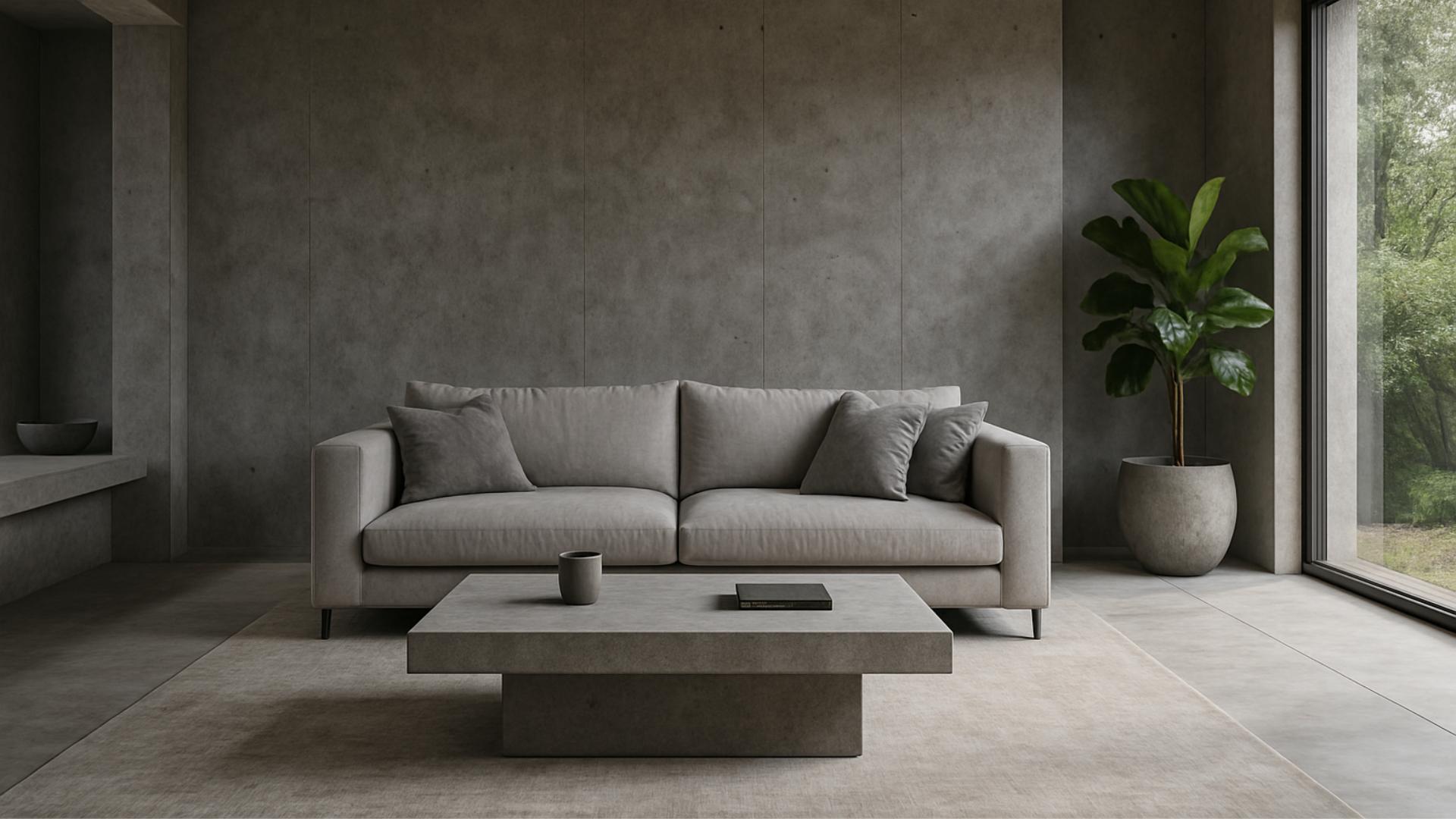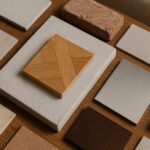Concrete isn’t just for sidewalks or brutalist architecture anymore. It’s stepping into our homes with grace, redefining spaces, and adding a distinctive modern touch. Imagine walking into a room where the walls whisper tales of industrial elegance, where the raw beauty of concrete merges seamlessly with the warmth of wood and the allure of contemporary design. In this article, I’ll guide you on a captivating journey through the world of concrete in home design, highlighting its transformative power and timeless appeal. Get ready to explore how this versatile material can be integrated into your living spaces to craft a home that speaks to both heart and mind.
The Beauty of Concrete Walls
When it comes to creating a statement in interior design, concrete walls are a game-changer. Gone are the days when concrete was seen as rough or unfinished. Today, it stands as a testament to modern elegance and refined taste.
Why Choose Concrete?
Concrete walls offer unparalleled versatility in design. Whether you’re aiming for a sleek modern look or an industrial vibe, concrete adapts to your vision. With the right finish, it can radiate sophistication or maintain a raw, rugged charm.
- Durability: Concrete is a material built to last. It withstands the test of time, ensuring that your walls remain sturdy and beautiful for years.
- Minimal Maintenance: Unlike other materials, concrete needs minimal upkeep. Its resistance to damage and stains makes it a practical choice for high-traffic areas.
- Aesthetic Appeal: The sheer variety of textures and finishes available allows you to customize concrete walls to suit your personal style.
Adding Character with Concrete
Concrete’s neutral palette makes it an excellent backdrop to highlight artwork, furniture, or bold color accents. Pair it with vibrant colors or lush greenery to create a room that bursts with character.
Innovative Designs
Consider incorporating feature walls using concrete with unique patterns or inlays. These can become the focal point of a room, drawing eyes and sparking conversations.
Embracing concrete as a design element transforms not just the space but the entire ambiance of your home, making it both a personal sanctuary and a work of art.
Integrating Concrete in Interior Spaces
Concrete’s versatility doesn’t stop at walls. It can be woven seamlessly into various elements of your home, enhancing the overall design.
Floors and Ceilings
Concrete flooring provides a clean, sophisticated look that’s easy to maintain. Choose from polished concrete for a glossy, modern finish or go for a matte texture to add warmth and depth. Concrete ceilings can create an industrial feel, especially when complemented with exposed beams or ductwork.
Kitchen and Bathrooms
Incorporating concrete into kitchens and bathrooms brings a sense of continuity and cohesion. Imagine a kitchen with sleek concrete countertops, paired with stainless steel appliances for that industrial chic. Bathrooms with concrete sinks or tubs introduce a spa-like atmosphere, creating a calming retreat.
Furniture and Decor
Concrete isn’t just for structural elements. Designers are crafting stunning pieces of furniture from concrete, including tables, benches, and even unique shelving units. These pieces add a touch of the unexpected, turning everyday items into art.
The Balance of Materials
The key to successfully integrating concrete is balance. Pair it with natural materials like wood or textiles to soften its raw edges. Consider adding pops of color through cushions or artwork to keep the space lively and inviting.
Creating harmony between concrete and other materials ensures that the space feels warm and welcoming, rather than cold or austere. {image_content}
Planning Your Space with Concrete
When using concrete in home design, planning is paramount. It can define the ambiance of your space and set the tone for the entire house. Let’s dive into how you can thoughtfully incorporate concrete in your planning.
Design Considerations
Before diving into concrete design, it’s essential to understand your house plans. Will the concrete feature be a focal point, or will it subtly complement other design elements?
- Space Functionality: Consider how each room will be used. Concrete can create a calm, minimalist vibe in living areas or make a statement in entryways.
- Lighting: Concrete can absorb light, so ensure ample natural and artificial lighting to keep the space bright and welcoming.
Choosing the Right Concrete Finish
Concrete can be sculpted into numerous finishes, from polished to textured surfaces. The finish you choose should align with your overall design vision.
- Polished Concrete: Offers a sleek, reflective surface that brightens up a room.
- Textured Concrete: Perfect for adding a tactile dimension, creating visual interest and depth.
Complementing with Color
While concrete itself is a neutral, pairing it with color can create a dynamic visual experience. Consider using warm tones like terracotta or soft earthy hues to counterbalance the coolness of concrete.
Sequencing the Design
Start with a central idea and build around it. If concrete walls are your focal point, ensure other elements in the room enhance, rather than compete with, this feature.
Incorporating concrete into your home should be a thoughtful process, allowing each element to contribute to a cohesive and visually stunning design.
Concrete in Modern Homes: A Case Study
To truly appreciate the potential of concrete in home design, let’s explore a real-life case study: a modern family home that seamlessly integrates concrete into its architecture and interior spaces.
The Vision
The homeowners wanted a modern yet warm environment, with an emphasis on sustainability and minimal maintenance. Concrete was chosen as the primary material due to its durability and aesthetic versatility.
Implementation
- Concrete Walls: These were used throughout the main living areas, providing a cohesive look. The walls were finished with a matte sealant to maintain their natural feel.
- Open Space Living: The open-concept living area used concrete flooring, creating a smooth transition between the kitchen, dining, and living spaces.
- Feature Elements: A unique concrete staircase became a centerpiece, blending functionality with striking design.
Balancing Materials
To balance the coolness of concrete, the family incorporated warm wooden accents and soft furnishings. Large windows were installed to flood the space with natural light, enhancing the overall sense of openness and warmth.
The Result
The result was a stunning modern home that exuded both comfort and style. The concrete elements provided a foundation that highlighted the home’s architectural beauty, while furnishings and decor added warmth and personality.
This home showcases how concrete, when used thoughtfully, can transform a house into a space of elegance and comfort, meeting both practical needs and aesthetic desires.
Concrete has evolved from a utilitarian material to a design powerhouse in modern homes. As we’ve explored, its applications are vast, from walls and floors to furniture and feature elements. The key is in balancing its strength with softer materials and thoughtful design.
By integrating concrete into your home, you’re not just choosing a material; you’re creating a legacy of style, durability, and modern elegance. Remember, the beauty of concrete lies in its ability to adapt, enhancing your home’s uniqueness and elevating its design.
For those ready to embrace concrete, the possibilities are endless. From a cozy room with a concrete feature wall to a full-fledged modern masterpiece, your home can be transformed into a sanctuary of innovation and resilience.
So, why not let concrete shape your next design journey? Your home isn’t just a building; it’s a canvas, waiting to tell its story through the language of design.
FAQ
What are the benefits of incorporating concrete features in home design?
Concrete features offer durability, cost-effectiveness, and a modern aesthetic, making them a versatile choice for various design styles. They are resistant to weather and wear, ensuring longevity and minimal maintenance.
How can concrete be used creatively in interior design?
Concrete can be used in numerous ways, such as polished concrete floors, concrete countertops, accent walls, and even custom furniture pieces. Its adaptability allows it to complement both industrial and minimalist design themes.
Is concrete environmentally friendly for home construction?
Yes, concrete is considered environmentally friendly when used responsibly. It has a high thermal mass, which contributes to energy efficiency by maintaining stable indoor temperatures. Additionally, many concrete products now incorporate recycled materials.
What are some popular decorative finishes for concrete surfaces?
Decorative finishes for concrete include acid staining for a marbled look, stamping for patterns, and polishing for a sleek, glossy finish. These techniques can transform plain concrete into a visually appealing feature.
Are there any challenges to consider when using concrete in home design?
While concrete is highly durable, it can be prone to cracking if not properly installed. It also requires professional handling for certain applications, like countertops. Additionally, its weight may require structural considerations during installation.



